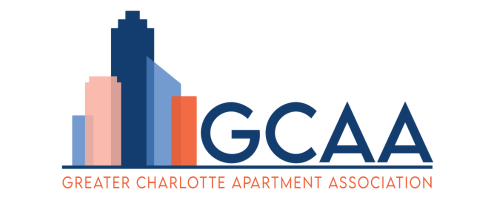Vote For Connection
Charlotte’s Housing And Transportation Futures Are Deeply Connected
As the region considers the upcoming transit-tax referendum on the ballot in November, it’s worth remembering that strong transit isn’t just about mobility; it’s about where and how we build housing. Expanding and improving transit access creates new opportunities for multifamily development, supports affordability, and strengthens the region’s competitiveness.
Transit And Housing Go Hand In Hand
According to McShane and Wnek (2024), more than 25 percent of all apartments built since 2020 in Charlotte are within a half mile of a light-rail station. Transit-oriented development (TOD) creates walkable, connected neighborhoods that attract private investment and support housing density.
Charlotte’s own data reinforces that point. A UNC Charlotte study found that “transit accessibility has acted as a catalyst for mixed-use and multifamily investment along the South Corridor,” driving redevelopment and higher-density housing near light-rail stations (Delmelle, Nilsson, & Schuch, 2021). The City’s Transit-Oriented Development Economic Analysis Report further notes that since the Blue Line opened in 2007, TOD districts have attracted more than $3 billion in private investment, with multifamily housing representing over 80 percent of new construction (City of Charlotte Planning Department, 2019).
Why It Matters Now
The proposed transit-funding plan would enhance the region’s bus network, extend rail connections, and improve multimodal infrastructure that connects people to jobs, schools, and housing. These improvements open the door for additional multifamily development along key corridors already served by transit.
According to McAdams and Shroyer (2025), households near reliable transit spend up to 16 percent less on transportation, leaving more disposable income for housing and everyday needs. Similarly, an NCDOT study found that multifamily properties within a half mile of Charlotte’s light-rail stations increased in value by roughly 11 percent compared with control areas (Bardaka et al., 2021). Streamlining approvals near transit lines (Manville, Gray, Monkkonen, & Phillips, 2024) can also accelerate housing delivery and reduce costs, supporting a more balanced housing market.
Key Takeaways
- Transit investment strengthens housing opportunities and regional accessibility.
- Housing near transit reduces household transportation costs by 10–16 percent.
- By-right approvals and zoning flexibility near transit speed housing delivery.
- The proposed transit referendum offers a pathway to align housing and transportation policy.
What This Means For Charlotte
Transit investment is also an investment in housing stability. By connecting new and existing neighborhoods to reliable transportation, Charlotte can promote balanced, connected growth that benefits residents across income levels.
At the Greater Charlotte Apartment Association (GCAA), we believe that strong transit systems and smart housing policy go hand in hand. Therefore, the GCAA is in full support of the transit referendum, and we urge all citizens of Mecklenburg County to support the referendum on November 4th. To learn more, visit YES FOR MECK.
References
Bardaka, E., et al. (2021). Economic Impacts of Transit Investments, Social Challenges, and Strategies for Sustaining High Ridership. NCDOT Research Report RP 2020-37. https://connect.ncdot.gov/projects/research/RNAProjDocs/RP%202020-37%20-%20Final%20Report%20-%20Part%20I.pdf
McAdams, B., & Shroyer, A. (2025, September 30). How an infrastructure financing law can help build thousands of homes and expand transit access. https://www.brookings.edu/articles/how-an-infrastructure-financing-law-can-help-build-thousands-of-homes-and-expand-transit-access/
City of Charlotte Planning Department. (2019). Transit-Oriented Development Economic Analysis Report. https://charlotteudo.org/wp-content/uploads/2019/03/EconomicAnalysisReport-updated.pdf
McShane, C., & Wnek, M. (2024, July 8). Developers target transit-oriented apartment development in Charlotte. CoStar News. https://www.costar.com/article/1835038207/developers-target-transit-oriented-apartment-development-in-charlotte
Delmelle, E., Nilsson, I. & Schuch, J.C. (2021). Rail Transit, Residential Mobility, and Income Segregation: Final Report. UNC Charlotte. https://pages.charlotte.edu/lightrailstudy/wp-content/uploads/sites/1277/2021/09/Final-report-Sep-2021.pdf
Ionescu, D. Planetizen. (2024). The Symbiotic Relationship of Housing and Transit. Planetizen. https://www.planetizen.com/news/2024/01/126952-symbiotic-relationship-housing-and-transit
Manville, M., Gray, N., Monkkonen, P. & Phillips, S. (2024). By Transit, By-Right: How Housing Development Approval Processes Can Support Higher Transit-Friendly Density. University of California Institute of Transportation Studies. https://ucits.org/projects/by-transit-by-right-how-housing-development-approval-processes-can-support-higher-transit-friendly-density/
